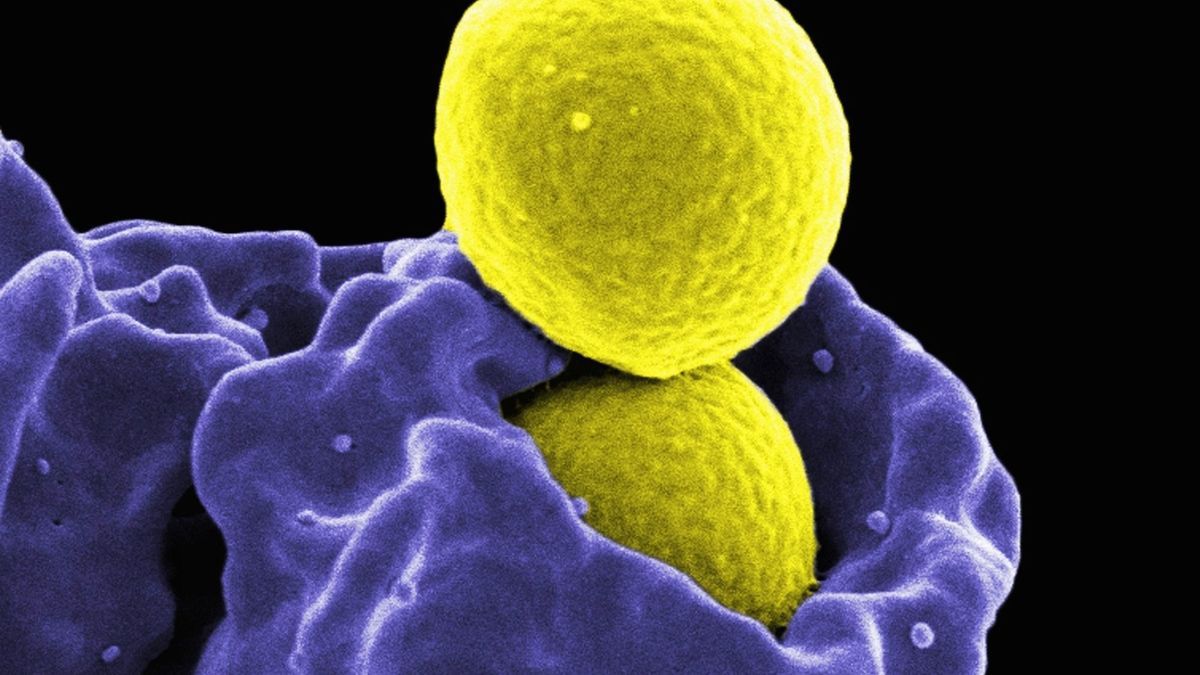
Published on
Updated
Phagocytosis is a biological mechanism that allows cells to capture and destroy pathogens. Phagocytosis plays a vital role in the body’s defense. Explanations with Gaël Saintenoy, pharmacist biologist in Tours.
Definition: what is phagocytosis and how does it work?
Composed of phago-, taken from the Greek “phagein” (to eat) and -cyte, taken from the Greek “cytos” (cell), phagocytosis refers to the process by which phagocytes, a class of white blood cells, ingest and destroy particles and other microorganisms. Physiologically, this phenomenon can be carried out by numerous cells, most often monocytes/macrophages and phagocytes. “This process can be mediated by several channels, either it is an effector cell which directly attacks the target cell, or it is antibodies which are placed on the target cell. After recognition by the immune system, the effector cells react and destroy the cell that was incriminated by the immune system”indicates Gaël Saintenoy.
What is the difference with endocytosis?
Endocytosis refers to the mechanism of transport of particles into the cell.
What is the role of phagocytosis?
Phagocytosis prevents any agent external to the body from entering, developing and taking over the body’s cells. “This cellular process therefore plays a major role in the activation and response of the immune system. : the cells responsible for immunity will capture and eliminate bacteria and other microorganisms, making it possible to fight against infections“, develops the pharmacist biologist. They also participate in the fight against cancer reducing the risk of having an abnormal cell that persists and could then grow.
Phagocytosis provides a second function: “a sort of quality control of the cells produced by the body. The objective? To ensure that they comply with the various provisions and that there is no risk of having self-reactive cells which would not be not good for the body. Phagocytosis also permanently eliminates cellular debris resulting from the body’s activity”adds our expert.
What are the stages of phagocytosis in an immune cell?
The process of phagocytosis occurs essentially through two channels.
- Premier canal : the presence of a microorganism is detected by the immune system. “Depending on the target, molecules will attract the cells responsible for phagocytosis. They will then be released into the bloodstream, approach the bacteria (for example), adhere to it and send a certain number of molecules to reach to the destruction of the cell and especially to its absorption by the macrophage or phagocyte which will recover the infectious agent and destroy it.explains the specialist.
- Second channel: recognition by the immune system, and in particular by antibodies produced by B lymphocytes, of a pathogen or an abnormal cell. This recognition attracts the macrophage cells, the macrophages arrive and destroy the assembly formed by the complex produced by the antibody and the cell to be destroyed. Macrophages, which are the cells most capable of performing phagocytosis, come from the monocytes that we see on the blood count. Their activation causes them to pass from monocyte to macrophage. “Other cells can also perform phagocytosis but their activity is less intense.. In addition, macrophages can have other names depending on their tissue location, for example they can be called osteoclasts in bone tissue.adds the specialist.
How can phagocytosis stop infection?
Phagocytosis plays an important role in the elimination of foreign particles, surveillance and activation of the immune system. If this process is altered, it will have several consequences. CRP, the inflammation protein, may increase. Microorganisms then grow more easily since they are not eliminated by phagocytes, giving rise to a possible susceptibility to bacterial infections.
Very rarely, phagocytosis can be activated intensely and without any real basis.. This is called macrophage activation syndrome. Concretely, the macrophages begin to activate for no reason in the bone marrow, inflammation becomes significant in the body and results in mechanisms leading to progressive destruction of marrow cells.
What is digestion in phagocytosis?
Digestion corresponds to the stage of recovery of the cell and its destruction. “These are molecules that allow the membrane and all molecules to be destroyed. The goal of digestion is to find infectious agents and stop them quickly to avoid infection before all of the more advanced immune responses are carried out”develops Gaël Saintenoy.
Dendritic, phagocytic cells, granulocytes, lymphocytes, macrophages… Which cells are capable of phagocytizing?
The process of phagocytosis is carried out by specialized cells of the immune system. Among them, we find neutrophils, dendritic cells, phagocytic cells, granulocytes, lymphocytes and even macrophages.
